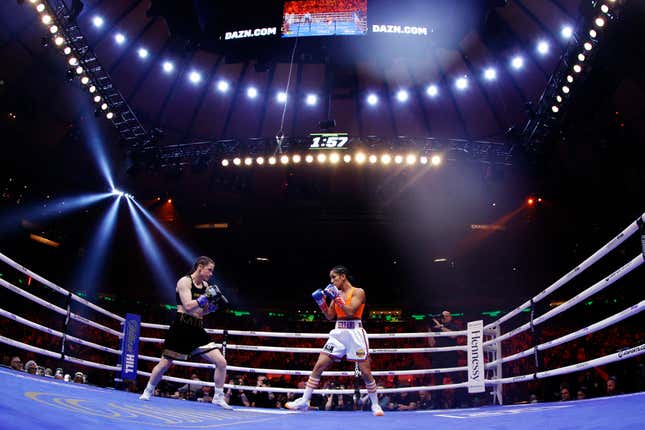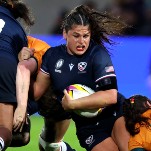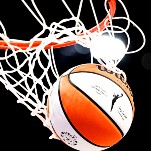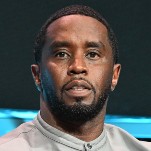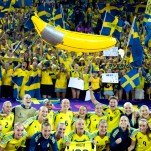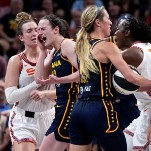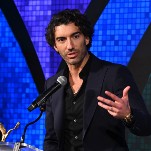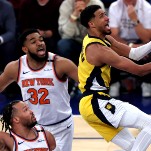Women’s Sports Fans: Where the Hell Are You?
When athletes don’t receive serious coverage, potential fans don’t get a chance to respect, and religiously follow, their game.
In DepthIn Depth
Illustration: Rebecca Fassola
Everything’s a blur for Atlanta Dream veteran Monique Billings. The WNBA’s 2022 season is nearing, and after a grueling schedule of two-a-day practices, adjusting to a new coach, and “mama bear”-ing a host of star rookies, the forward is taking a breather to get her head on straight. While she needs her body to function like a machine, she hopes fans can see both Monique the athlete (a perpetual underdog who’s always been “slept on”) and Monique the woman (someone who wants to “wear a dress and get buckets and be a beast”). All within the last week, she’s celebrated her 26th birthday, announced her first book launch, and promoted LeBron James’ sports nutrition company as a sponsored athlete. The feeling isn’t far from what she felt when she was drafted four years ago: “Is this happening? Pinch me. Am I dreaming?” A couple weeks later, the Dream will win its first game, against the Dallas Wings, and Billings will score six points and 14 rebounds.
But Billings wants more—specifically, more “women supporting women” on behalf of her league. She wants Michelle Obama, or Oprah, or Drew Barrymore in attendance. “I’m trying to see Beyoncé courtside at a game like we saw Jay-Z courtside at a Hawks game a couple of weeks ago,” she laughs. “It’s like, B! Come through, you know what I mean?!” And what she wants extends to the media, too.
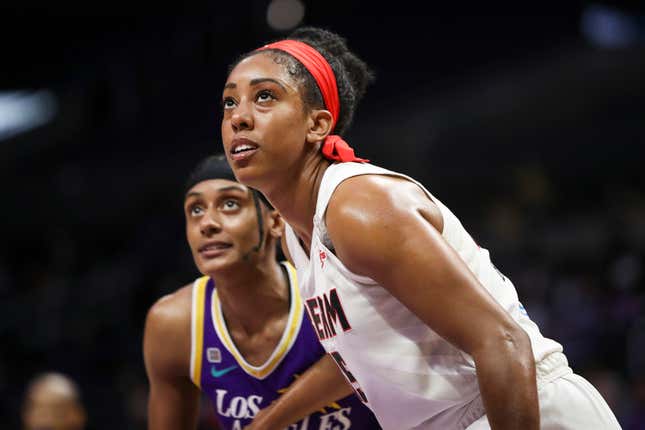
The truth is that the occurrence of a woman sports reporter interviewing a woman athlete is still somewhat of a miracle. It’s simple math, really: There are a maximum of 144 players in the WNBA (versus around 500 in the NBA), just 14.4 percent of sports reporters are women, and to that end, both Billings and I seem aware that even this interview’s existence is something to be grateful for. During our call, we exchanged excited squeals over the Empire State Building glowing bright orange in honor of the WNBA draft. But the Empire State Building should’ve glowed WNBA-orange long ago.
Women’s sports are having a year of historic, albeit overdue, firsts. Approved to use the coveted March Madness branding for the first time, the NCAA women’s basketball tournament brought in huge ratings. Collegiate women athletes scored NIL (Name, Image, and Likeness) deals for the first time, with gymnast Livvy Dunne reportedly approaching $1 million in deals. And the first ever woman-headlined boxing matchup landed at Madison Square Garden with a record 1.5 million viewers last month. Even so, coverage of women’s sports remains scant: Just 5 percent of television coverage and 10 percent of Twitter promotion was dedicated to women’s sports in 2019, according to one study.
At long last, the blueprint for women’s sports media, formerly copy-and-pasted as a low-budget version of the playbook that worked for men’s sports, appears to be changing, too. Rather than as a side gig or free labor, women and nonbinary people are getting jobs to cover the full experience of women and nonbinary athletes, and a dozen or so startup media publications founded by women—mostly for women—have cropped up to make women’s sports accessible to anyone whose brain has been blasted with television coverage of the NFL, MLB, and NBA from the time they could crawl across a carpeted living room. But even as this influx of publications hits the fraternized sports world, the hunt for the rumored women’s sports fan remains a ravenous one.
The “Opt-In” Hurdle to Women’s Sports
Frankie de la Cretaz, a freelance journalist who focuses on the intersection of sports, gender, and culture, believes women’s sports are an “opt-in” industry. “I was not really plugged into the women’s sports world,” they told Jezebel. “I had to be like, ‘Wow, I’m really sick of watching and covering sports and leagues that seem to hate me as a person. There’s all these domestic abuses on the field, and people are anti-queer, and this feels exhausting.’ So I pivoted to women’s sports, but it had to be a concerted effort on my part.”
I had to be like, ‘Wow, I’m really sick of watching and covering sports and leagues that seem to hate me as a person. There’s all these domestic abuses on the field, and people are anti-queer, and this feels exhausting.’
But even if someone were to clear the “opt in” hurdle, they’d still find mainstream coverage of women’s sports lacking. While de la Cretaz is optimistic about the uptick in coverage, they note that there are only a handful of beat writers for individual WNBA teams. And they’re right: Take the Los Angeles Times, for example. While there are tabs for the Lakers, Dodgers, Rams, and Chargers on its Sports page, the Sparks are nowhere to be found, apparently a lower priority than “High School Sports.” Buried under a dropdown menu lies Angel City FC, which drew 22,000 fans to their first game. Similarly, there’s no WNBA news section for the Liberty in The New York Times, and the city’s Gotham FC news is folded under a larger Soccer tab. AZ Central, which shares a home with the Phoenix Mercury and the still-detained Brittney Griner, has the team buried under “More,” as does ESPN with the WNBA. Some of the most popular sports podcasts on Spotify are hosted by Barstool Sports, Bill Simmons, Barstool Sports, Jomboy Media, and…Barstool Sports.
Sports Illustrated is one of the few legacy publications that gives women’s sports a hearty look, but when the company announced earlier this week it’d put five WNBA stars on the cover of its upcoming Swim issue, some players and critics (including de la Cretaz) took issue with the heavily vetted femininity on display: Skilled and hot! Nice to watch! But the vast spectrum of gender diversity, a point of pride within the league, was missing.
-

-

-

-

-

-

-

-

-

-

-

-

-

-

-

-

-

-

-

-

-

-

-

-

-

-

-

-

-

-

-

-

-

-

-

-

-

-

-

-

